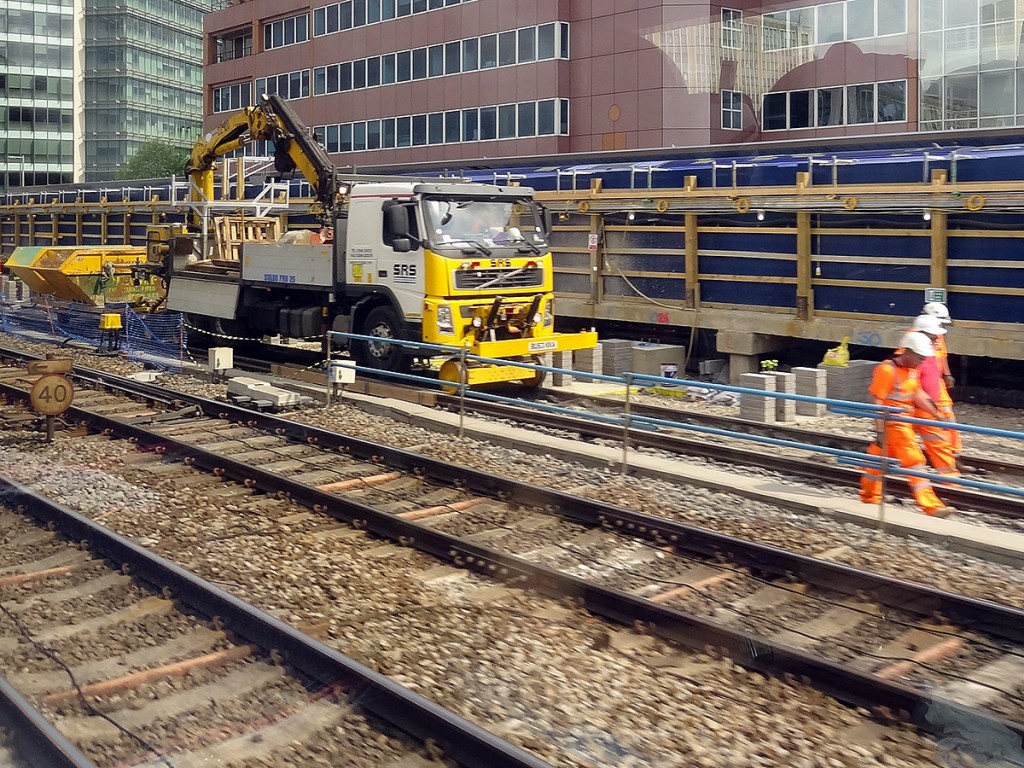 Over the past few decades, numerous areas within the British economy have been partly or fully privatized and one such case is British Rail. Why is this relevant now? We’re once again looking at the potential increase in rail fares across the country and the impact this will have on commuters and households. So, have the promises of privatisation – namely lower fares – actually materialised?
Over the past few decades, numerous areas within the British economy have been partly or fully privatized and one such case is British Rail. Why is this relevant now? We’re once again looking at the potential increase in rail fares across the country and the impact this will have on commuters and households. So, have the promises of privatisation – namely lower fares – actually materialised?
Comparing the increase in rail fares with that of the RPI makes for interesting reading. Data obtained back in January 2013 shows that since 1995, when the last set of British Rail fares were published, the RPI has been 66%, according to data from Barry Doe and this compares unfavourably with the increase in a single ticket from London to Manchester which had increased by over 200%. However, it compares favourably with a season ticket, which had only increased by 65%. In the last couple of years, increased in rail fares have been capped by the government to increase by no more than the rate of inflation. As such, customers are likely to be somewhat insulated from the increases that were expected, which could have ranged between 3 and 5%.
This announcement has been met with mixed reviews, with many in support of such caps and the benefit this will bring to working households, including Passenger Focus, the rail customer watchdog. Its Passenger Director, David Sidebottom said:
The capping of rail fare rises by inflation will be welcome news to passengers in England, especially those who rely on the train for work, as will the ban on train companies increasing some fares by more than the average. It is something we have been pushing for, for several years now and we are pleased that the Government has recognised the need to act to relieve the burden on passengers.
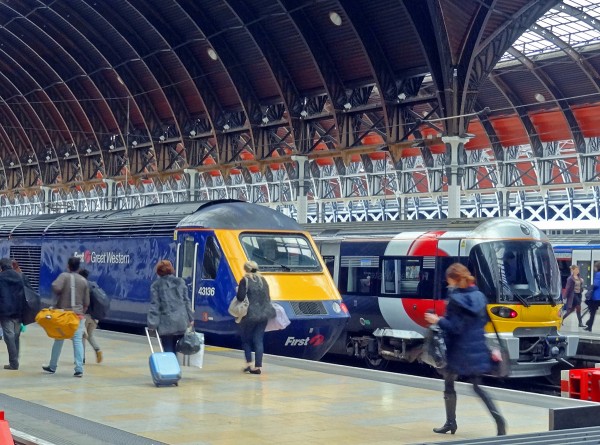 However, others have criticised the increases in rail fares, given the cost of living crisis and the potential 9% pay rise for MPs. The acting General Secretary of the RMT transport union commented:
However, others have criticised the increases in rail fares, given the cost of living crisis and the potential 9% pay rise for MPs. The acting General Secretary of the RMT transport union commented:
The announcement from George Osborne does not stack up to a freeze for millions of people whose incomes are stagnant due to years of austerity. To try and dress this up as benefiting working people is pure fraud on the part of the Government … Tomorrow, RMT will be out at stations across the north where some off-peak fares will double overnight.
Commuters in different parts of the country do face different prices and with some changes in peak travel times in the Northern part of the country, it is expected that some customers will see significant hikes in prices. Peak travel prices being higher is no surprise and there are justifiable reasons for this, but would such changes in peak times in the North have occurred had we still been under British Rail? Privatisation should bring more competition, lower prices and government revenue at the point of sale. Perhaps you might want to look in more detail at the actual to see whether or not you think the benefits of privatisation have actually emerged. The following articles consider the latest announcement regarding rail fares.
Rail fares to increase by 2.5% in January after Osborne caps price rises at no more than inflation Mail Online, Tom McTague (7/9/14)
Have train fares gone up or down since British Rail? BBC News, Tom Castella (22/1/13)
Rail fares to match inflation rate for another 12 months The Guardian (7/9/14)
Britain caps rail fares at inflation Reuters (7/9/14)
Regulated rail fares to increase by 3.5% in 2015 BBC News (19/8/14)
Northern commuters face big rise in fares for evening travel The Guardian, Gwyn Topham (7/9/14)
Commuter rail fares frozen again, says George Osborne BBC News (7/8/14)
Rail fares, the third payroll tax Financial Times, Jonathan Eley (22/8/14)
Questions
- What are the general advantages and disadvantages of privatisation, whether it is of British Rail or British Gas?
- Why is it that season tickets have increased by less than the RPI, but single tickets have increased by more?
- What are the conditions needed to allow train companies to charge a higher price at peak travel times?
- Are higher prices at peak times an example of price discrimination? Explain why or why not.
- In the Financial Times article, it is suggested that rail fares are like a payroll tax. What is a payroll tax and why are rail fares related to this? Does it suggest that the current method of setting rail fares is equitable?
- Based on the arguments contained in the articles, do you think the cap on rail fares is sufficient?
 The pricing model for low-cost airline seats seems simple. As the seats get booked, so the price rises. Thus the later you leave it to book, the more expensive it will be. But, in fact, it’s not as simple as this. Seat prices sometimes come down as the take-off date approaches. So what is the pricing model?
The pricing model for low-cost airline seats seems simple. As the seats get booked, so the price rises. Thus the later you leave it to book, the more expensive it will be. But, in fact, it’s not as simple as this. Seat prices sometimes come down as the take-off date approaches. So what is the pricing model?
The general principle of raising prices as the plane fills up still applies. This enables the airline to discriminate between passengers. Holidaymakers and those with flexibility about when, and possibly where, to travel tend to have a relatively high price elasticity of demand. People who wish to travel at the last minute, such as businesspeople and those facing a family emergency, tend to have a much lower price elasticity of demand and would be prepared to pay a higher, possibly much higher, price.
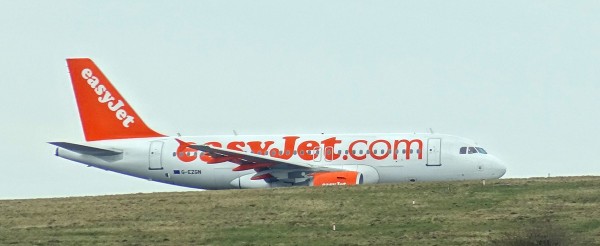 With relatively high fixed costs for each flight, low-cost airlines need to fill, or virtually fill, their planes if they are to make a profit. And it’s not just about the direct revenue from ticket sales. Low-cost carriers also rely on the revenue from selling extras, such as on-board refreshments, hold luggage, hotels, car hire and travel insurance. With variable costs being tiny, the pricing model is about maximising revenue for each flight. So the fuller the plane, the better it is for the airline.
With relatively high fixed costs for each flight, low-cost airlines need to fill, or virtually fill, their planes if they are to make a profit. And it’s not just about the direct revenue from ticket sales. Low-cost carriers also rely on the revenue from selling extras, such as on-board refreshments, hold luggage, hotels, car hire and travel insurance. With variable costs being tiny, the pricing model is about maximising revenue for each flight. So the fuller the plane, the better it is for the airline.
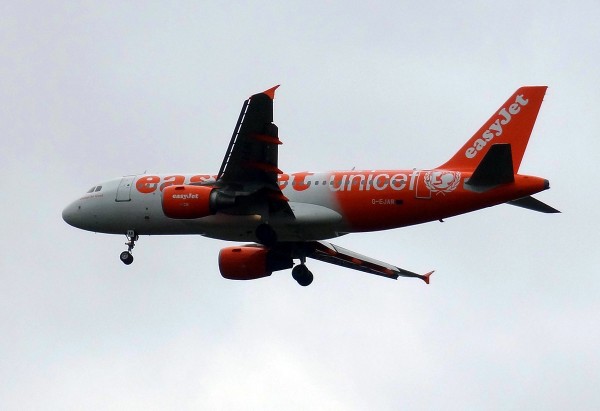 The airlines are very experienced in estimating demand over the period from a flight coming on sale and the departure date. If they get it right, then prices will indeed rise as take-off approaches. But sometimes they get it wrong. If, as time passes, a given flight is filling up too slowly, then it makes sense to be more flexible on prices, cutting them if necessary. Pricing may be easy in principle; but not always easy in practice!
The airlines are very experienced in estimating demand over the period from a flight coming on sale and the departure date. If they get it right, then prices will indeed rise as take-off approaches. But sometimes they get it wrong. If, as time passes, a given flight is filling up too slowly, then it makes sense to be more flexible on prices, cutting them if necessary. Pricing may be easy in principle; but not always easy in practice!
Article
Low-cost air fares: How ticket prices fall and rise BBC News, Erica Gornall (21/6/13)
Papers
Pricing strategies of low cost airlines Air Transport Group, Cranfield University, Keith J Mason (2002)
Pricing strategies of low-cost airlines: The Ryanair case study Journal of Air Transport Management, 15, Paolo Malighetti, Stefano Paleari and Renato Redondi (2009)
Questions
- Does a low-cost airline always charge lower prices than a traditional scheduled airline? If not, why not?
- Identify the various reasons why holidaymakers may have a relatively elastic demand for a particular flight?
- Explain the system of ‘buckets’ of seats?
- Are low-cost airlines engaging in price discrimination and, if so, which type?
- Are there any variable costs of operating a particular flight (assuming that the flight does actually take place)?
- If demand for a flight becomes less elastic as the date of departure gets nearer, why might a budget airline choose to lower the price, at least for a few days?
- Why can Ryanair operate with lower costs than easyJet?
- Would it be in low-cost airlines’ interests to charge more (a) to overweight people; (b) for using the toilet?
 The Office for Budget Responsibility has said that the UK Treasury will face a shortfall of £13bn in motoring taxes within a decade. Although car usage continues to rise putting increasing pressure on the road infrastructure, the greener and more fuel efficient cars being produced are driving down the tax revenues generated from motoring.
The Office for Budget Responsibility has said that the UK Treasury will face a shortfall of £13bn in motoring taxes within a decade. Although car usage continues to rise putting increasing pressure on the road infrastructure, the greener and more fuel efficient cars being produced are driving down the tax revenues generated from motoring.
A report by the IFS has put forward the case for replacing the existing system of taxes on cars and fuel by a new road charging system. If no such change occurs, the IFS has forecast that with more electric cars and hence lower revenues raised from fuel and vehicle excise duties, the shortfall facing the Treasury would require an increase in fuel duty of some 50%. Instead of this, the solution could be to charge individuals for every mile of road they use, with the ‘price’ varying depending on the degree of congestion. For example, at peak times the price would be higher, where as for those in the countryside where roads are traditionally much quieter, charges would be lower. The IFS said:
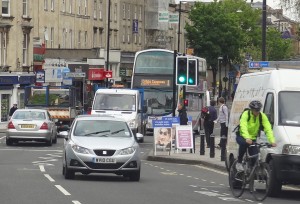 ‘Such a move would generate substantial economic efficiency gains from reduced congestion, reduce the tax levied on the majority of miles driven, leave many (particularly rural) motorists better off, and provide a stable long-term footing for motoring taxes without necessarily raising net additional revenue from drivers.’
‘Such a move would generate substantial economic efficiency gains from reduced congestion, reduce the tax levied on the majority of miles driven, leave many (particularly rural) motorists better off, and provide a stable long-term footing for motoring taxes without necessarily raising net additional revenue from drivers.’
Government policy across the world has been increasingly focused on climate change, with targets for emissions reductions being somewhat ambitious. However, many car manufactures who were told to reduce emissions significantly are on the way to meeting these targets and this success is a key factor contributing towards this new road ‘crisis’ that could soon be facing the government. The following articles consider the possibility of a road charging scheme.
Report
The road ahead for motoring taxes? Institute of Fiscal Studies (link to full report at the bottom of the page) (May 2012)
Articles
Compelling case for UK road charging, IFS study says BBC News (15/5/12)
Fears tax shortfall may lead to road tolls Sky News (15/5/12)
Who’s going to pay to update Britain’s infrastructure? Guardian Business Blog (15/5/12)
Motoring taxes: a future headache for the Chancellor Channel 4 News (15/5/12)
For whom the toll bills – less traffic hurts M6 toll road owner Guardian, Ian Griffiths and Dan Milmo (14/5/12)
Charge motorists per mile, says IFS Independent, Nigel Morris (15/5/12)
Green cars to drive down tax receipts Financial Times, Mark Odell and John Reed (15/5/12)
Questions
- Illustrate the effect of a tax being imposed on petrol. What happens to the equilibrium price and quantity?
- Despite fuel duty pushing up the price of petrol, why has there been such a small decline in the quantity of petrol individuals use?
- Evaluate the case for and against a road charging scheme.
- Why are tax revenues from motoring expected to decline over the next decade?
- Climate change has become an increasingly important focus of government policy. To what extent is the current road ‘crisis’ a positive sign that policies to tackle climate change are working?
- If a road charging scheme went ahead and prices were varied depending on traffic, time etc, what name would you give to this strategy?
- Why would it be possible to charge a higher price at peak times and a lower price for cars using country roads?
- Is there an argument for privatising the road network? Is it even possible?
The owner-occupied housing market has seen widespread coverage. With house prices falling throughout the recession and problems accessing mortgages for many people, it is this sector of housing that has received most attention. However, it is rental homes that we’ll be considering here and a new strategy being adopted by landlords. As access to mortgages dried up, people instead turned to renting. Demand for rental properties began to increase, such that competition between potential tenants increased significantly. Not only has there been a substantial increase in rents – up by some 35%, but it has also led to a new ‘sealed bid’ strategy.
A strategy that is often used for purchasing houses is where potential buyers submit sealed bids and it is this approach which is now spreading to the rental sector, as demand and competition for properties increases. Potential tenants are required to submit a sealed bid, containing the amount that they are willing to pay to rent out the property and all this must be done within a deadline. Whoever submits the highest bid ‘wins’ the property and hence tenants are encouraged to submit a bid at or close to the maximum they are willing to pay. Landlords insist that they are not trying to force tenants to pay more, but that it is simply the most effective way of letting properties that are short in supply, but face significant demand. As the BBC News article states:
‘It seems that with the current state of the housing market, sealed bids will be here to stay – as long as many would-be renters are chasing a dwindling supply of good rental homes.’
Rental ‘gazumping on the up as demand rises Metro, Tariq Tahir (8/11/10)
’Bidding war’ for homes to rent BBC News, Nigel Cassidy (20/11/10)
Rental market’s now so hot tenants are having to make sealed bids Mail Online, Sebastien O Kelly (8/11/10)
Is the buy-to-let market on its way back? Seek4Media (20/11/10)
Gazumping on the rise as London rental soars Gulf Times, London Evening Standard (8/11/10)
Questions
- Using a supply and demand diagram, explain the trend we have seen in the rental market, thinking about the impact on demand, supply and hence on price. How does this explain why sealed bids have been used to combat the increased competition?
- Which factors have affected (a) the demand for rental properties and (b) the supply of rental properties? How is the elasticity of demand and supply relevant here in terms of the impact on price?
- To what extent is a sealed bid format fair on potential tenants? Who does such a strategy favour?
- How could this sealed bid strategy be an example of price discrimination?
- What is likely to happen to your consumer surplus if you have to submit a sealed bid?
Last week, I posted an article about a price discriminating tactic in operation by a few firms, whereby they were charging different prices to different consumers, depending on whether or not people could speak the language. (See Entrance this way!). Following this, I had a look around to find some other pricing strategies in practice by firms. These ranged from simple price discrimination to a well-known supermarket, which, following the failure of its till system, decided to trust consumers: estimate the value of the goods in your trolley/basket, deduct 20% and that’s the amount you pay. Also, a strategy being adopted by a number of restaurants – ‘pay what you think it’s worth!’ An advertising gimmick that increased sales.
So, what’s the best pricing strategy for a firm to adopt and which factors affect this? Is it really a rational decision to offer meals, with the possibility that the guests may only be prepared to pay 1p?!
You decide how much meals are worth, restaurants tell customers Telegraph, Nina Goswami (12/06/05)
Panera café says pay what you want Associated Press, Food Inc, Christopher Leonard (18/5/10)
Pound shop forced to close after 99p store opens across the road Daily Mail Online (12/1/09)
Low cost? Not with these extras Times Online, Richard Green (17/8/08)
Cheap hotels: budget accommodation for visits to London Telegraph (25/10/10)
 Budget customers call the hotel Tune BBC News, Susannah Streeter (30/8/10)
Budget customers call the hotel Tune BBC News, Susannah Streeter (30/8/10)
Questions
- Is it a rational decision to trust consumers and ask them to estimate the value of what’s in their trolleys?
- Why would a restaurant offer consumers the chance to pay ‘what you think it’s worth’? Under what circumstances would this incrrease the firm’s revenue?
- What are the key factors that determine the price a firm will charge for its product?
- How can we use the case in Poole, with the new 99p shop, to analyse the model of perfect competition?
- What pricing tactic is being used by the 99p shop? How could we argue that this is an example of tacit collusion?
 Over the past few decades, numerous areas within the British economy have been partly or fully privatized and one such case is British Rail. Why is this relevant now? We’re once again looking at the potential increase in rail fares across the country and the impact this will have on commuters and households. So, have the promises of privatisation – namely lower fares – actually materialised?
Over the past few decades, numerous areas within the British economy have been partly or fully privatized and one such case is British Rail. Why is this relevant now? We’re once again looking at the potential increase in rail fares across the country and the impact this will have on commuters and households. So, have the promises of privatisation – namely lower fares – actually materialised? However, others have criticised the increases in rail fares, given the cost of living crisis and the potential 9% pay rise for MPs. The acting General Secretary of the RMT transport union commented:
However, others have criticised the increases in rail fares, given the cost of living crisis and the potential 9% pay rise for MPs. The acting General Secretary of the RMT transport union commented:




